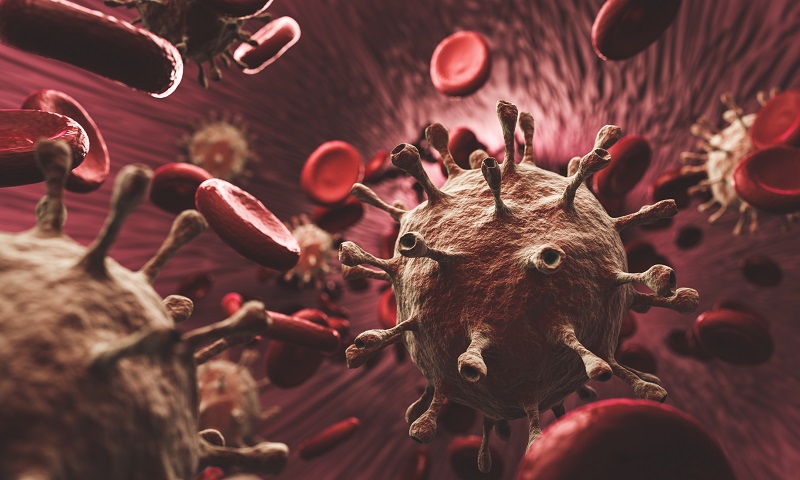
According to the projections made by specialists, periodical physical distancing measures may become a necessity if the new coronavirus becomes a seasonal situation.
Researchers from the Harvard T. H. Chan School of Public Health in Boston, MA have used mathematical models to project SARS-CoV-2 transmission dynamics throughout the pandemic and beyond. In their study, which appears in the journal Science, researchers have noted that it is a probability that the novel coronavirus will become endemic, with infections fading and flowing throughout the coming years. The same thing goes for cold and flu viruses.
This being the case, the researchers suggest that physical distancing may become an intermittent requirement until 2022.
“We found that one-time [physical] distancing measures are likely to be insufficient to maintain the incidence of SARS-CoV-2 within the limits of critical care capacity in the United States,” says lead study author Stephen Kissler, Ph.D.
‘Intermittent’ physical distancing necessary
In order to understand how transmission patterns of SARS-CoV-2 might develop, the researchers analyzed the dynamics of two seasonal coronaviruses: beta-coronaviruses OC43 and HKU1. These are two types of common human coronaviruses that cause mild cold-like symptoms.
According to the study, the infection regarding SARS-CoV-2 might also become a seasonal occurrence, because it is a similar case with the other beta-coronaviruses that infect humans. Additionally, because there are no vaccines available at the moment or targeted treatment for the infection with the novel coronavirus, the researchers believe that on-and-off physical distancing may be a necessary measure that may become a habit for us, over the next couple of years. This measure is a must in order to prevent hospitals from becoming overwhelmed.
“What seems to be necessary in the absence of other sorts of treatments are intermittent [physical] distancing periods,” says Kissler.
The researchers also point out the need to create a balance between healthcare capacity and economic resources on a case-by-case basis. Moreover, they believe that some transmission of the virus could lead to a level of herd immunity, which could help reduce its impact.
“By permitting periods of transmission that reach higher prevalence than otherwise would be possible, they allow an accelerated acquisition of herd immunity,” notes study co-author Prof. Marc Lipsitch.
On the other hand, too-strict physical distancing measures suggests that humans cannot create a herd immunity at all, which would make a return of the virus even more problematic.
According to the study paper, “longer and more stringent temporary [physical] distancing did not always correlate with greater reductions in epidemic peak size.”
“In the case of a 20-week period of [physical] distancing […] the resurgence peak size was nearly the same as the peak size of the uncontrolled epidemic: [T]he [physical] distancing was so effective that virtually no population immunity was built,” explained the authors of the study.
Questions about immunity still remain
However, the researchers highlighted the fact that they faced an important disadvantage while making their projections because it still remains unknown how strong immunity might be for people who have already contracted the virus, and how long this immunity may last for.
Their estimations, based on their research made upon other human coronaviruses, suggest that immunity to SARS-CoV-2 may last for up to 2 years.
They also believe that those who contract a common beta-coronavirus, for example, and build up immunity to that virus can also become more resistant to contracting SARS-CoV-2, all because of a phenomenon called “cross-immunity.”
Nonetheless, the researchers still believe that immunity to SARS-CoV-2 will not be long-lasting enough in order to cause the waves of infection to die out completely, as it was with the SARS-CoV outbreak back in 2002.
All we can do is hope that, in the future, there will be tests that can show whether or not a person has formed antibodies against SARS-CoV-, who will also help inform researchers and public health strategies.
“This is an excellent study that uses mathematical models to explore the dynamics of COVID-19 over a period of several years, in contrast to previously published studies that have focused on the coming weeks or months,” Prof. Mark Woolhouse, infectious disease epidemiologist from the University of Edinburgh in the United Kingdom says.
However, he explains that the researchers made their projections on working hypotheses that still need to be verified by future studies.
“It is important to recognize that it is a model; it is consistent with current data but is nonetheless based on a series of assumptions — for example about acquired immunity — that are yet to be confirmed,” he adds.











































